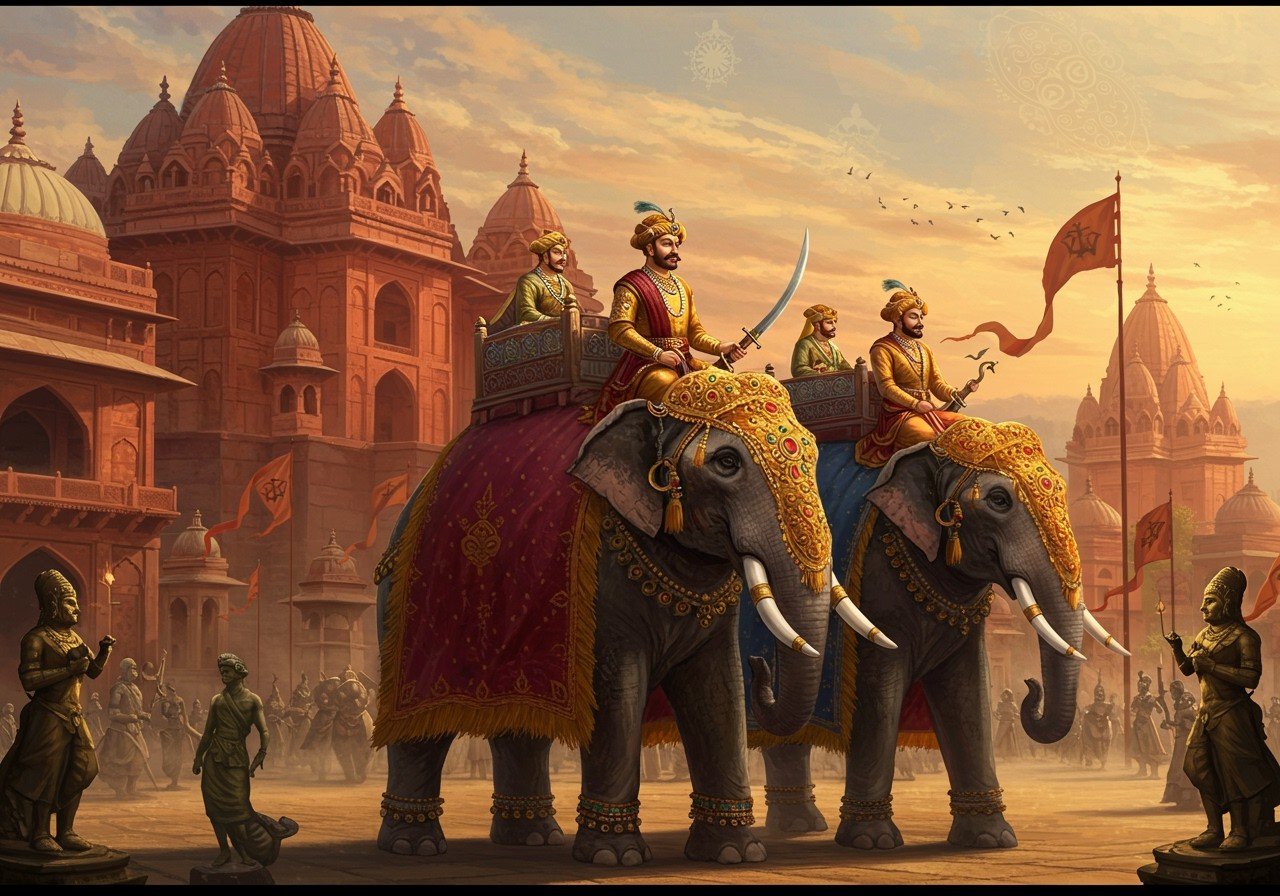
The Pratihara dynasty, also known as the Gurjara-Pratihara dynasty, played a pivotal role in shaping medieval India. Ruling a significant portion of Northern India from the mid-8th to the 11th century, this dynasty left an enduring legacy through military achievements, cultural patronage, and architectural marvels. While the rulers referred to themselves as “Pratihara,” meaning “door-keeper” or “protector,” the association with the Gurjara people remains a topic of historical discussion.
The Rise of the Pratiharas
Emerging around the mid-8th century, the Pratiharas quickly established themselves as a formidable force. Nagabhata I (730-760 CE) laid the foundation for the dynasty’s future dominance by repelling Arab incursions and securing control over Malwa and parts of Rajasthan. This victory not only demonstrated their military prowess but also signified their role as protectors of the region. The reigns of Kakustha and Devaraja (760-780 CE) and Vatsaraja (780-800 CE) further solidified the dynasty’s power, setting the stage for a period of significant expansion and influence.
The Golden Age: Mihir Bhoja and Beyond
The Pratihara dynasty reached its zenith under the reign of Nagabhata II (800-833 CE), who expanded the empire significantly. However, it was Mihir Bhoja (836-885 CE) who truly ushered in the dynasty’s golden age. His rule witnessed unparalleled territorial expansion, economic prosperity, and a flourishing of art and culture. Mihir Bhoja’s patronage led to remarkable advancements in literature, architecture, and sculpture, leaving behind a rich cultural heritage. Mahendrapala I (885-910 CE), his successor, continued this legacy, further solidifying the Pratihara’s position as a major power in Northern India. His reign was marked by political stability and sustained economic growth, ensuring the continuation of the dynasty’s cultural and artistic endeavors.
Notable Pratihara Rulers
- Nagabhata I (730-760 CE): The founder of the dynasty, credited with repelling Arab invasions and establishing the Pratihara’s initial stronghold. His military successes laid the groundwork for future expansion and solidified their role as protectors.
- Vatsaraja (780-800 CE): A key figure in consolidating the dynasty’s power and expanding its territories. He engaged in several military campaigns, contributing significantly to the Pratihara’s growing influence in Northern India.
- Nagabhata II (800-833 CE): A powerful ruler who further expanded the Pratihara Empire, securing its position as a dominant force. His military campaigns and strategic alliances significantly broadened the dynasty’s reach.
- Mihir Bhoja (836-885 CE): Considered one of the greatest Pratihara rulers, his reign marked the dynasty’s golden age. He oversaw significant territorial expansion, economic prosperity, and a flourishing of art, architecture, and literature.
- Mahendrapala I (885-910 CE): Successfully continued the legacy of Mihir Bhoja, maintaining the empire’s strength and stability. His reign was characterized by continued economic growth and cultural patronage.
Military Prowess and Cultural Contributions
The Pratiharas were renowned for their military strength, effectively defending their territories from external threats. Their successes against Arab incursions played a crucial role in safeguarding the region. Beyond military achievements, the dynasty fostered a vibrant cultural environment. Under rulers like Mihir Bhoja and Mahendrapala I, art, architecture, and literature thrived. Temples like the Teli ka Mandir in Gwalior stand as testaments to their architectural prowess. Poojn.in offers a wide selection of deities, puja items, and prasad recipes, allowing you to connect with this rich cultural heritage.
The Decline and Legacy
Despite their dominance, the Pratihara dynasty eventually faced decline starting in the early 10th century. Internal conflicts, the rise of regional powers, and invasions from the likes of Mahmud of Ghazni weakened their control. The once unified empire fragmented into smaller states, marking the end of their reign. However, their legacy continues to inspire. Their contributions to art, architecture, and literature endure, reminding us of their significant role in shaping medieval India. Explore more about ancient Indian temples and their significance through our blogs on Maluti Temples and South Indian Temples.
Poojn.in, India’s leading online store for spiritual and cultural products, offers a wide range of items to help you connect with your heritage. Discover exquisite idols of deities worshipped during the Pratihara era, puja accessories, and much more. Visit www.poojn.in to embark on a journey of cultural exploration.


